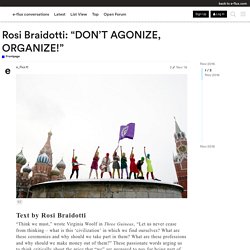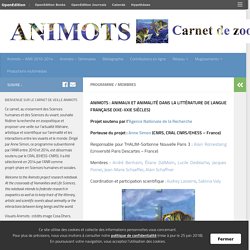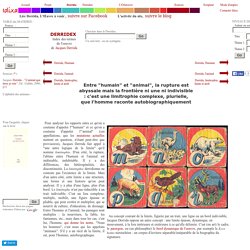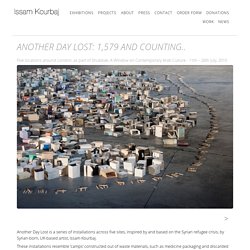

Amitav Ghosh: where is the fiction about climate change? It is a simple fact that climate change has a much smaller presence in contemporary literary fiction than it does even in public discussion.

As proof of this, we need only glance through the pages of literary journals and book reviews. When the subject of climate change occurs, it is almost always in relation to nonfiction; novels and short stories are very rarely to be glimpsed within this horizon. Indeed, it could even be said that fiction that deals with climate change is almost by definition not of the kind that is taken seriously: the mere mention of the subject is often enough to relegate a novel or a short story to the genre of science fiction.
It is as though in the literary imagination climate change were somehow akin to extraterrestrials or interplanetary travel. There is something confounding about this peculiar feedback loop. Why does climate change cast a much smaller shadow on literature than it does on the world? Rosi Braidotti: "DON’T AGONIZE, ORGANIZE!" - Frontpage. “Think we must,” wrote Virginia Woolf in Three Guineas, “Let us never cease from thinking – what is this ‘civilization’ in which we find ourselves?

What are these ceremonies and why should we take part in them? What are these professions and why should we make money out of them?” These passionate words urging us to think critically about the price that “we” are prepared to pay for being part of this civilization, and of the male-dominated institutions that govern it, resonate loud and clear today. They seem as relevant now as when they were first uttered in the 1930’s, at another crucial turning point in our political history.
One always thinks against one’s times, in spite of the times and out of concern for one’s times. New Materialism – Networking European Scholarship on 'How matter comes to matter' Programme / Membres – Animots. Projet soutenu par l’Agence Nationale de la Recherche Porteuse du projet : Anne Simon (CNRS, CRAL CNRS/EHESS – France) Responsable pour THALIM-Sorbonne Nouvelle Paris 3 : Alain Romestaing (Université Paris Descartes – France) Membres : André Benhaïm, Éliane DalMolin, Lucile Desblache, Jacques Poirier, Jean-Marie Schaeffer, Alain Schaffner Coordination et participation scientifique : Audrey Lasserre, Sabrina Valy Dans le concert intellectuel contemporain sur l’animalité, les discours et représentations propres à la création littéraire sont rarement pris en compte par une critique académique qui aborde l’animalité selon des axes traditionnels restrictifs (analyses allégoriques, études régionalistes, cantonnement à des genres « mineurs »).

L’animal, si « naturel » au niveau phénoménologique et existentiel, est en réalité un objet d’étude fuyant, construit par les chercheurs autant qu’étudiés par eux : le pluriel du projet « Animots » (J. Version anglaise / English version. Entre "humain" et "animal", la rupture est abyssale mais la frontière ni une ni indivisible : c'est une limitrophie complexe, plurielle, que l'homme raconte autobiographiquement. Pour analyser les rapports entre ce qu'on a coutume d'appeler l'"humain" et ce qu'on a coutume d'appeler l'"animal" (ces appellations, que les mutations actuelles mettent en question, n'étant peut-être que provisoires), Jacques Derrida fait appel à "une autre logique de la limite" qu'il nomme limitrophie.

D'un côté, la rupture, l'abîme entre l'humain et l'animal est indéniable, indubitable. Il y a des différences, des hétérogénéités, des discontinuités. La limitrophie derridienne ne conteste pas l'existence de la limite. Mais d'un autre côté, cette limite a une structure, une forme et une histoire qu'on peut analyser. Il y a plus d'une ligne, plus d'un bord.
Au singulier général "Animal", il faut substituer l'animot, cette chimère, cet hybride monstrueux, cette irréductible multiplicité vivante de mortels - [Chimere (350-340 BC)] Quand on parle de l'animal en général, (l'Animal) de quoi parle-t-on?
![Au singulier général "Animal", il faut substituer l'animot, cette chimère, cet hybride monstrueux, cette irréductible multiplicité vivante de mortels - [Chimere (350-340 BC)]](http://cdn.pearltrees.com/s/pic/th/irreductible-multiplicite-138984264)
Employé au singulier, ce mot désigne tous les animaux par opposition à l'homme. Il suppose une limite, une frontière indivisible et stable entre ce qu'on appelle les hommes et ce qu'on appelle les animaux. Selon Derrida, il n'y a pas plus grande bêtise. Pourtant aucun grand philosophe (de Platon à Heidegger à Lévinas et Lacan) n'a abordé philosophiquement cette question. Animots – Carnet de zoopoétique. Untitled. In a discussion during the CEU School of Public Policy's 2016 annual conference the view from here: artists // public policy, Syrian-born artist Issam Kourbaj had an intimate conversation with the audience about his youth and evolution as an artist.

Issam Kourbaj - Another Day Lost: 1,579 and counting.. Five locations around London, as part of Shubbak: A Window on Contemporary Arab Culture - 11th – 26th July, 2015 Another Day Lost is a series of installations across five sites, inspired by and based on the Syrian refugee crisis, by Syrian-born, UK-based artist, Issam Kourbaj.

These installations resemble ‘camps’ constructed out of waste materials, such as medicine packaging and discarded books.